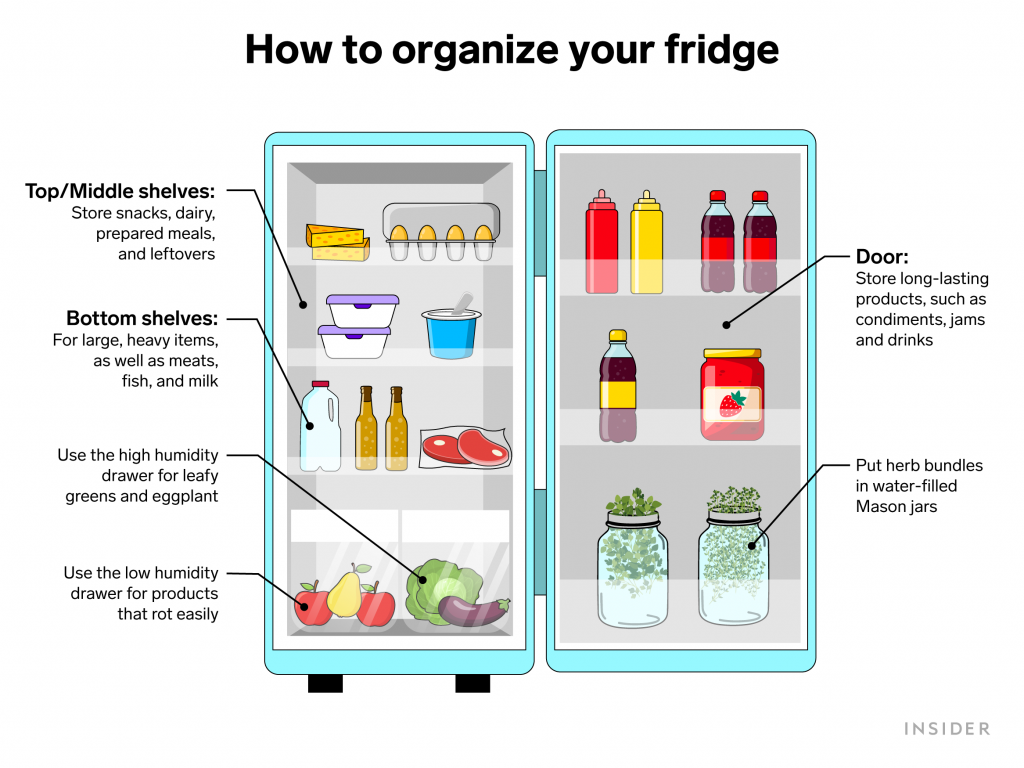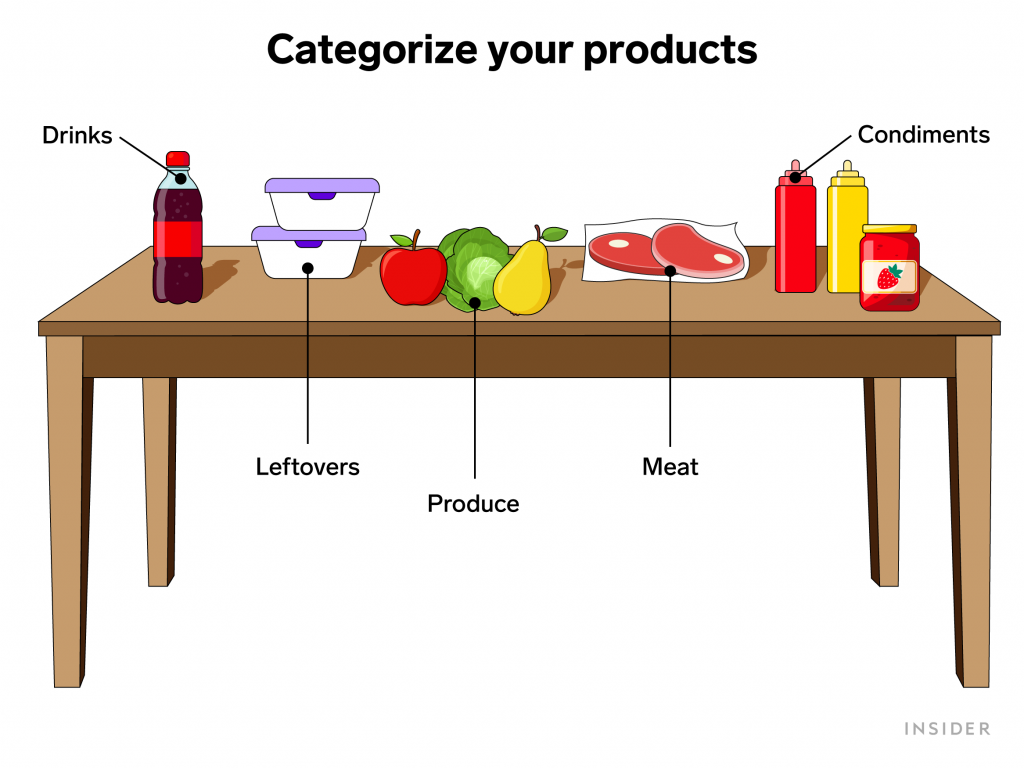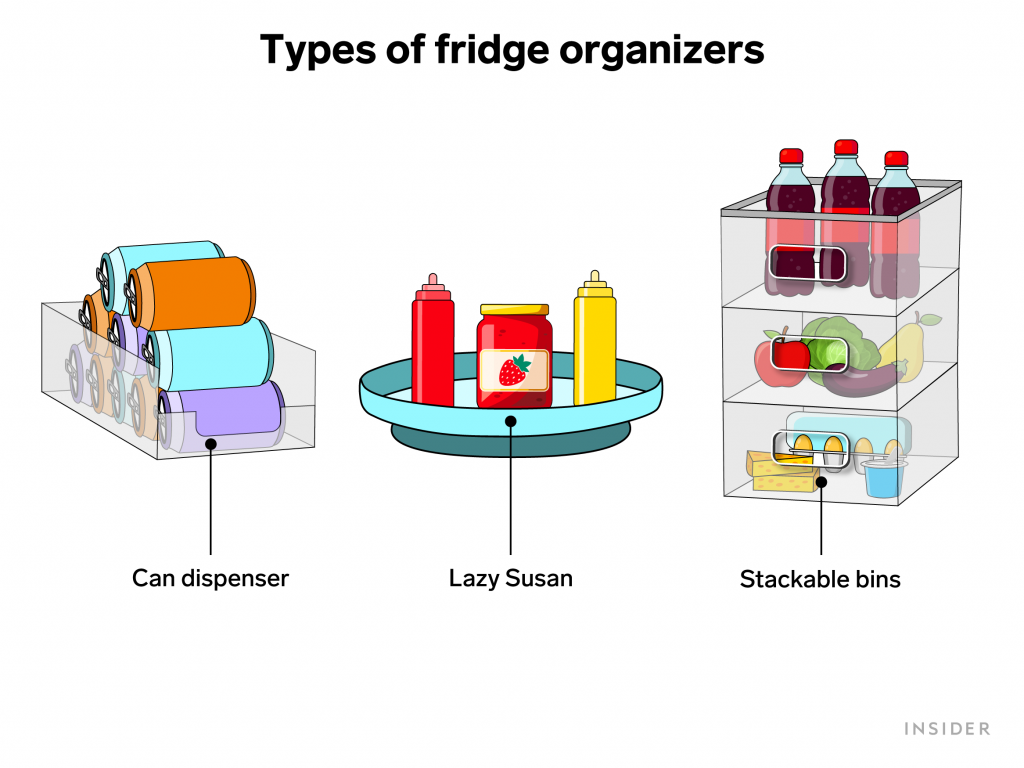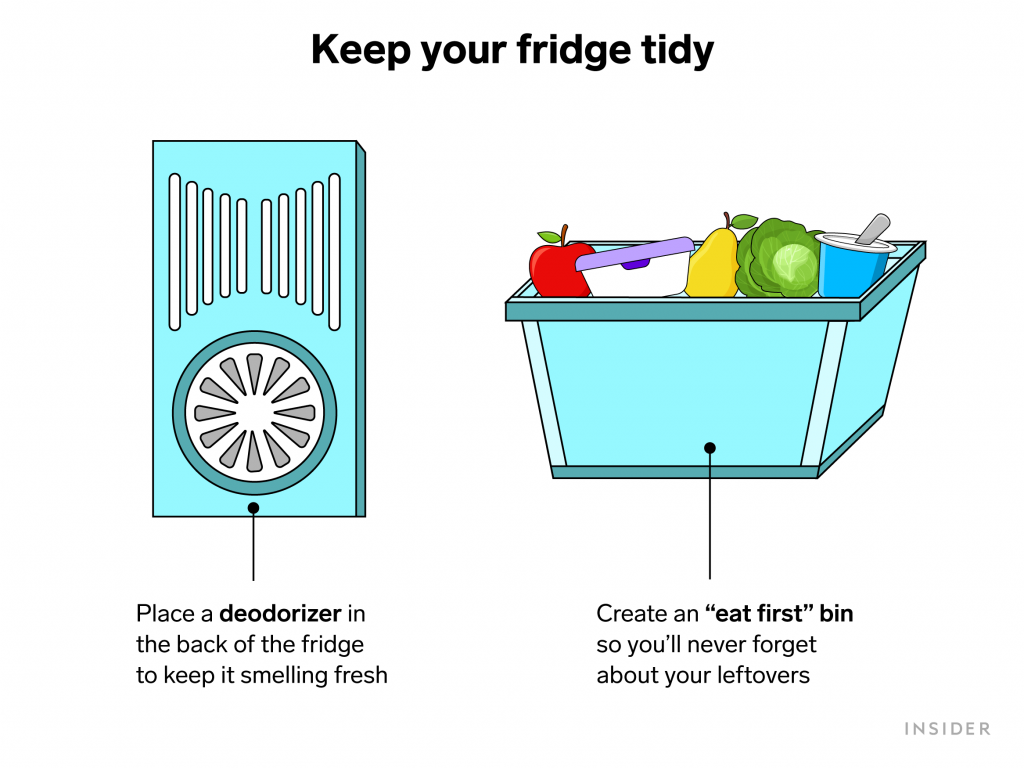- Having an organized fridge ensures you're not wasting food, time, and money.
- Every fridge has different zones based on temperature you can use to create an organizational system.
- To keep things neat and tidy, consider organization solutions like clear containers and bins.
- Visit Insider's Home & Kitchen Reference library for more stories.
Keeping a refrigerator organized may seem like a useless chore better left to perfectionists of the world.
But when you take stock of all the kitchen appliances you use on a daily basis, the fridge is arguably the most important. So why not keep it as neat as other spaces? When there's order to the chaos, the financial and health benefits can be rewarding.
"When everything is in place, you're more likely to make better food choices, not to mention the peace of mind of having items organized based on usage and expiration dates," says Pia Thompson, professional organizer and owner of Sweet Digs.
When done properly, an organized fridge can also help reduce waste and cut down on groceries.
Thompson shares her best tips on how to keep an organized fridge to reap the benefits of reducing food waste, saving money and time, and above all, having a beautifully decluttered fridge.
Plan the layout

The first step to better fridge organization is as simple as knowing where to store items. This will ensure you're maximizing all of your fridge's compartments.
Your overall game plan depends on your personal needs. "Consider what's best for you and your family and organize the fridge so that items are easy to access," says Thompson.
For example, if you have kids, you may want store healthy snacks at their eye level. Or, if you normally store water bottles or canned beverages in the fridge, you'll want to make sure you plan out the space accordingly.
Beyond personal needs, the fridge itself can guide your organization. The door and top shelf tend to be the "warmest" parts of a fridge, while the middle shelf is colder, and the bottom shelf is the coldest.
Understanding that refrigerators have warm and cold zones can help you create a system where everything has its place and food lasts longer. Here are some general guidelines.
The door
The door is the warmest part of the fridge and goes through the most fluctuations in temperature. Here, Thompson suggest storing condiments, jams, and other foods most resistant to spoiling. She also recommends storing herbs like parsley, cilantro and dill in the door — place each herb bundle in a water-field Mason jar to prolong their freshness.
Even though a carton of milk might fit perfectly in the door, it's generally not a good idea to store dairy there, and that includes eggs. Thompson recommends storing milk in the bottom shelf since it needs low temperatures to last longer.
Top and middle shelves
The top and and middle shelves are typically the second coldest zone and the temperature stays constant. Thompson says this section should be reserved for ready-to-eat or grab-and-go foods and snacks and dairy (like yogurt, sour cream, and cheeses), desserts, prepared meals, and leftovers. Uncovered items such as berries and eggs can also go in the top and middle shelves.
Lower shelves
The lowest shelf is typically the coldest part of the fridge. This section should accommodate large, heavy items (like beer bottles and soda cans) as well as meats and fish.
It's a smart idea to store meat on the bottom shelf to prevent cross-contamination in case the package leaks. To be extra safe, try storing your meat (in its original packaging) in designated clear bins, that way any possible leaks are contained to one area for easy clean up.
Crisper drawers
Refrigerators have at least one crisper drawer, but most have two — a low-humidity drawer and a high-humidity drawer. The low-humidity drawer should be used to store produce items that rot easily, such as apples, pears, and melons, whereas the high humidity drawer should be used to store leafy greens, cauliflower, and eggplant.
"Crisper drawers are designed to reduce humidity and provide added control over temperature, so it's best to keep produce there," says Thompson, adding "but fruits and veggies should not be stored together since the ethylene in fruits may cause veggies to spoil faster."
Remove everything and group like items together

With a general layout in mind, the next step is to remove and categorize everything.
When taking things out, Thompson recommends throwing away items past their expiration dates, moldy items, and items that often go unused or are disliked. To categorize products, you can use sticky notes to keep track of everything. A simple category list includes:
- Drinks
- Produce
- Meats
- Leftovers
- Condiments
After removing everything, Thomson says sanitizing every part of the inside of the fridge is essential. All removable parts should be taken out and washed with dish soap, while other parts can be thoroughly cleaned with all-purpose cleaner or disinfectant wipes.
Use organizers to maximize space

When you're ready to put everything back in a clean fridge, consider adding organizers. Just as organizers can help you corral items in a pantry or cabinets, the same could be said with the fridge. Fridge size and design of course vary, but here are a few ideas.
Take advantage of vertical and wall space. The limited space of a fridge can be a disadvantage when it comes to storage and organization, which is why Thompson recommends going vertical with stackable storage and using empty wall space.
"Consider a can dispenser, stackable bins, or a basket with suction cups to hold small things that might otherwise get lost in the refrigerator like string cheese or condiment packets," she says.
Use organizers and labels. When it comes to organizing, Thompson says it's best to get fun and creative with it. "Invest in a cute and functional matching or color coordinated set," she says. Add your drinks, produce, meats, leftovers, and condiments into containers and organizers and place them in their designated fridge zones to keep things neat.
"A bamboo organizer for eggs, a lazy Susan, and clear dividers will make it easy to get into the habit of organizing food while also seeing exactly what's there." To take it a step further, Thompson also suggests labeling everything and using uniform labels that clearly define the products and are especially useful for leftovers and the date they were made.
Use liners to keep things clean. Now that you're ready to put everything back in the fridge in an orderly fashion, Thompson suggests first lining drawers and shelves to maintain cleanliness.
"Line shelves with washable mats and line drawers with paper towels or dish towels," says Thompson. "Paper towels will not only make it easier to clean up crisper drawers, but they can help keep produce fresh. Replace them every two weeks to make cleaning super easy."
Tips to keep your fridge tidy

- Create an "eat first" bin: Thompson says this is especially helpful for those who always forget to eat their leftovers, or forget that they have them in the first place. Label this bin with the expiration date or date it was made.
- Follow a "one in, one out" philosophy: This is a tried-and-true method followed by professional kitchens and homeowners alike. "When you have more than one of something, put the oldest in front so it gets used first," says Thompson. "It's imperative to organize based on shelf-life."
- Don't overfill. Once you have organized your fridge, Thompson advises to avoid overfilling or overstocking, that way you can use up what you have and keep track of expiration dates easily. "When you buy too much food, the chances of ending up throwing it away are pretty high, especially when you have those items that make it all the way to the back of the shelves and are pretty much forgotten," says Thompson. "A crowded fridge can also lead to blocked air vents, impede air flow, and reduce energy efficiency ultimately leading to dollars down the drain."
- Add a deodorizer. Thompson always recommends placing a fresh deodorizer in the back of the top shelf so that your fridge not only looks great, but smells great too. "Nothing is worse than having to get a stinky whiff after opening the fridge door, especially when you're hungry," says Thompson. Baking soda is a simple and inexpensive solution, but there are sachets, patches, and specialized deodorizers for even the smelliest of fridges.
Insider's takeaway
With a clear layout plan, a categorization system, and the right organizing products, your fridge can become as aesthetically pleasing as a well-organized closet. Knowing what products belong in the appropriate fridge zones and avoiding food waste by following long term tips can help save you money and keep your fridge in tip-top shape.
